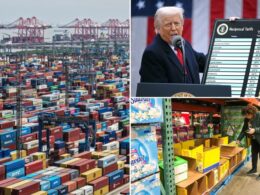Volvo Cars said on Wednesday it plans to slash 5% of its workforce at its South Carolina plant due to economic uncertainty fueled by President Trump’s tariffs.
About 125 of the Charleston plant’s 2,500 employees will be impacted, according to a spokesperson.
The automaker, however, said it remained committed to adding 4,000 jobs in the state, a goal it set in 2018 when the factory first opened.
It’s also still looking to boost output at the Charleston facility in the future, the company added.
Volvo Cars did not immediately respond to The Post’s request for comment.
In its quarterly earnings report last week, Volvo Cars said it plans to lower costs by $1.88 billion. This figure does not include the newly-announced layoffs.
Like most others in the sector, Volvo Cars – which is owned by Geely Holding, a Chinese automotive conglomerate – is facing a significant hit from Trump’s tariffs.
While its largest factory is located in Sweden, the carmaker also has three huge facilities in China.
In early April, Trump slapped a 25% tax on foreign vehicle imports, and followed up with the same rate on auto parts last week – which is expected to impact virtually all cars in the US, since even those made in the country contain parts from other nations.
A few days before the tax on auto parts took effect, Trump announced “a little bit of help” for automakers.
The auto tariffs, he said, won’t stack on top of other duties he has imposed, like those on steel and aluminum, or the hefty rates on Canada and Mexico.
Trump’s 145% tariff on China, however, will continue to apply on top of the auto tariffs.
But Volvo Cars said the US remains a key part of its long-term strategy.
While its Charleston factory has the capacity to produce 150,000 cars each year, it currently only makes the EX90 electric SUV and Polestar’s model 3, with most Volvo cars imported from Europe.
In April, the company said it has sold 1,316 EX90s in the US so far this year.
Volvo Cars has nearly 43,000 employees around the world, including 29,000 in Europe, about 10,000 in Asia and 3,000 in the Americas, according to its 2024 annual report.
With Post wires








